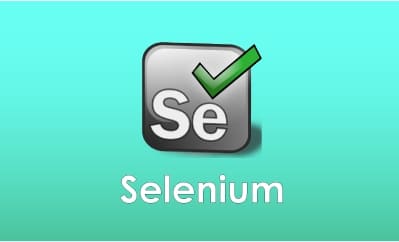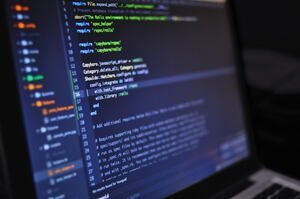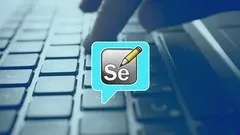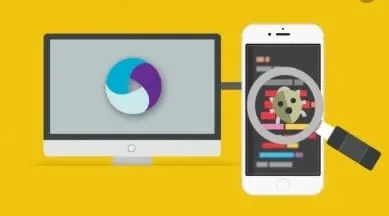This plan includes
- Limited free courses access
- Play & Pause Course Videos
- Video Recorded Lectures
- Learn on Mobile/PC/Tablet
- Quizzes and Real Projects
- Lifetime Course Certificate
- Email & Chat Support
What you'll learn?
- Includes Selenium 4, and 217 in-depth organized sessions (136+ hours), Real time Live Project and Interview Questions.
Course Overview
This courses is detailed, easy to understand and step by step with practicals, well defined and real time video tutorials on Selenium Java. It does not require to have any prior Java programming knowledge, as all the prerequisites such as Java are explained in detail before covering Selenium topics. We have included following in the course:
- Interview Questions and Answers (Recorded Videos and Notes)
- Along with videos, notes having the session details and links to download the code/frameworks/other files are provided
- Huge list of real time and practical examples are provided throughout the sessions
- Installation/configurations of various software are also explained in detailed in this course
- Framework concepts are explained before showing how to build different frameworks
- Sessions covering the development of different frameworks are also covered in detailed
Pre-requisites
- No pre-requisites required for this course. All prerequisites are included in this course from basics.
- No need to learn Core Java, as it is included in this course in detail
Target Audience
- Beginners and Advanced Selenium Members
Curriculum 296 Lectures 126:18:14
Section 1 : Selenium - Introduction and Prerequisites
- Lecture 2 :
- Introduction Part 2
Section 2 : Locator for Selenium
- Lecture 1 :
- Locators for Selenium - Intro Video
- Lecture 2 :
- HTML for Selenium - What is HTML
- Lecture 3 :
- HTML Tags Attribute Names Attribute Values Enclosed Text HTML Elements
- Lecture 4 :
- Structure of HTML
- Lecture 5 :
- Adding Title to the HTML Web Page
- Lecture 6 :
- Adding Paragraphs to the HTML Web Page
- Lecture 7 :
- Adding Bold, Italic and Underlined text to the HTML Web Page
- Lecture 8 :
- Adding different sizes of headings
- Lecture 9 :
- Adding hyperlinks to the web page
- Lecture 10 :
- Adding Rulers to the Web Page
- Lecture 11 :
- Adding Images to the Web Page
- Lecture 12 :
- Adding Line Breaks to the Web Page
- Lecture 13 :
- Adding Table to the Web Page
- Lecture 14 :
- What are Locators?
- Lecture 15 :
- Different Types of Locators
- Lecture 16 :
- Demonstrating ID locator
- Lecture 17 :
- Demonstrating Name locator
- Lecture 18 :
- Demonstrating Class Name locator
- Lecture 19 :
- Demonstrating Link Text locator
- Lecture 20 :
- Demonstrating CSS Selector locator
- Lecture 21 :
- Demonstrating XPath locator
- Lecture 22 :
- Demonstrating DOM locator
- Lecture 23 :
- Priority of Locators
- Lecture 24 :
- Additional details about different Locators
Section 3 : XPath Expressions
- Lecture 1 :
- What is an XPath?
- Lecture 2 :
- Hierarchy of HTML Source Code
- Lecture 3 :
- Types of XPath Expressions
- Lecture 4 :
- Building Absolute XPath Expressions
- Lecture 5 :
- Advantages and Disadvantages of Absolute XPath Expressions
- Lecture 6 :
- Relative XPath Expressions - First Set of Examples
- Lecture 7 :
- Relative XPath Expressions - Second Set of Examples
- Lecture 8 :
- Relative XPath Expressions - Third Set of Examples
- Lecture 9 :
- Relative XPath Expressions - Fourth Set of Examples
- Lecture 10 :
- Relative XPath Expressions - Fifth Set of Examples
- Lecture 11 :
- Relative XPath Expressions - Sixth Set of Examples
- Lecture 12 :
- Relative XPath Expressions - Seventh Set of Examples
- Lecture 13 :
- XPath Expressions - Wild Cards
- Lecture 14 :
- XPath Expressions - HTML Tables
- Lecture 15 :
- Different XPath Functions
- Lecture 16 :
- text() XPath Function
- Lecture 17 :
- contains() XPath Function
- Lecture 18 :
- starts-with() XPath Function
- Lecture 19 :
- last() XPath Function
- Lecture 20 :
- position() XPath Function
- Lecture 21 :
- Different XPath AXES
- Lecture 22 :
- following XPath AXES
- Lecture 23 :
- preceding XPath AXES
- Lecture 24 :
- following-sibling XPath AXES
- Lecture 25 :
- preceding-sibling XPath AXES
- Lecture 26 :
- parent XPath AXES
- Lecture 27 :
- child XPath AXES
- Lecture 28 :
- ancestor XPath AXES
- Lecture 29 :
- descendant XPath AXES
- Lecture 30 :
- Advantage of Relative XPath Expressions over Absolute XPath Expressions
Section 4 : CSS Selectors in detail
- Lecture 1 :
- What is a CSS Selector
- Lecture 2 :
- Types of CSS Selectors
- Lecture 3 :
- Building Absolute CSS Selectors
- Lecture 4 :
- Advantages and Disadvantages of Absolute CSS Selectors
- Lecture 5 :
- Relative CSS Selectors - First Set of Examples
- Lecture 6 :
- Relative CSS Selectors - Second Set of Examples
- Lecture 7 :
- Relative CSS Selectors - Third Set of Examples
- Lecture 8 :
- first-child in CSS Selectors
- Lecture 9 :
- last-child in CSS Selectors
- Lecture 10 :
- nth-child in CSS Selectors
- Lecture 11 :
- Comma and Asterisk Symbols in CSS Selectors
- Lecture 12 :
- Starts With, Ends With and Contains Symbols in CSS Selectors
- Lecture 13 :
- Using not in CSS Selectors
- Lecture 14 :
- Using following sibling in CSS Selectors
- Lecture 15 :
- Locating disabled, enabled and selected UI elements using CSS Selectors
- Lecture 16 :
- XPath Expressions are powerful over CSS Selectors
- Lecture 17 :
- CSS Selectors have higher priority over XPath Expressions
Section 5 : FireBug and FirePath Alternatives
- Lecture 1 :
- FireBug got deprecated and discontinued
- Lecture 2 :
- List of Alternatives
- Lecture 3 :
- ChroPath for Chrome Browser
- Lecture 4 :
- ChroPath for Firefox Browser
- Lecture 5 :
- ChroPath for Opeara Browser
- Lecture 6 :
- devtools-highlighter
- Lecture 7 :
- Try XPath
- Lecture 8 :
- Default Chrome Dev Tools
- Lecture 9 :
- XPath Finder
- Lecture 10 :
- XPath Helper
- Lecture 11 :
- Relative XPath Helper
- Lecture 12 :
- MRI
- Lecture 13 :
- True Path for Chrome
- Lecture 14 :
- True Path for Firefox
- Lecture 15 :
- Ranorex Selocity
- Lecture 16 :
- Default Firefox Dev Tools
- Lecture 17 :
- Chrome Console
- Lecture 18 :
- ChroPath is the best
- Lecture 19 :
- Learn Manual Creation of XPath Expressions and CSS Selectors
Section 6 : Java for Selenium
- Lecture 1 :
- Java - Part 1
- Lecture 2 :
- Java - Part 2
- Lecture 3 :
- Java - Part 3
- Lecture 4 :
- Java - Part 4
- Lecture 5 :
- Java - Part 5
- Lecture 6 :
- Java - Part 6
- Lecture 7 :
- Java - Part 7
- Lecture 8 :
- Java - Part 8
- Lecture 9 :
- Java - Part 9
- Lecture 10 :
- Java - Part 10
- Lecture 11 :
- Java - Part 11
- Lecture 12 :
- Java - Part 12
- Lecture 13 :
- Java - Part 13
- Lecture 14 :
- Java - Part 14
- Lecture 15 :
- Java - Part 15
- Lecture 16 :
- Java - Part 16
- Lecture 17 :
- Java - Part 17
- Lecture 18 :
- Java - Part 18
- Lecture 19 :
- Java - Part 19
- Lecture 20 :
- Java - Part 20
Section 7 : Selenium WebDriver
- Lecture 1 :
- Selenium WebDriver - Part 1
- Lecture 2 :
- Selenium WebDriver - Part 2
- Lecture 3 :
- Selenium WebDriver - Part 3
- Lecture 4 :
- Selenium WebDriver - Part 4
- Lecture 5 :
- Selenium WebDriver - Part 5
- Lecture 6 :
- Selenium WebDriver - Part 6
- Lecture 7 :
- Selenium WebDriver - Part 7
- Lecture 8 :
- Selenium WebDriver - Part 8
- Lecture 9 :
- Selenium WebDriver - Part 9
Section 8 : Framework Concepts, Frameworks, Continuous Integration and Live Project
- Lecture 1 :
- Frameworks Concepts - Properties Files
- Lecture 2 :
- Framework Concepts - POI API
- Lecture 3 :
- Framework Concepts - POI API (Part 2)
- Lecture 4 :
- Framework Concepts - Log4j
- Lecture 5 :
- Framework Concepts - TestNG
- Lecture 6 :
- Framework Concepts - TestNG (Part 2)
- Lecture 7 :
- Framework Concepts - TestNG (Part 3)
- Lecture 8 :
- Framework Concepts - Maven
- Lecture 9 :
- Framework Concepts - Extent Reports
- Lecture 10 :
- Framework Concepts - Taking Screenshots and ANT (Part 1)
- Lecture 11 :
- Framework Concepts - ANT (Part 2)
- Lecture 12 :
- Data Driven Framework - Part 1
- Lecture 13 :
- Data Driven Framework - Part 2
- Lecture 14 :
- Data Driven Framework - Part 3
- Lecture 15 :
- Data Driven Framework - Part 4
- Lecture 16 :
- Data Driven Framework - Part 5
- Lecture 17 :
- Data Driven Framework - Part 6
- Lecture 18 :
- Cucumber and BDD - Part 1
- Lecture 19 :
- Cucumber and BDD - Part 2
- Lecture 20 :
- Cucumber and BDD - Part 3
- Lecture 21 :
- Cucumber and BDD - Part 4
- Lecture 22 :
- Cucumber and BDD - Part 5
- Lecture 23 :
- Cucumber and BDD - Part 6
- Lecture 24 :
- Page Object Model and Page Factory - Part 1
- Lecture 25 :
- Page Object Model and Page Factory - Part 2
- Lecture 26 :
- Page Object Model and Page Factory - Part 3
- Lecture 27 :
- Page Object Model and Page Factory - Part 4
- Lecture 28 :
- Jenkins, Git and GitHub - Part 1
- Lecture 29 :
- Jenkins, Git and GitHub - Part 2
- Lecture 30 :
- Jenkins, Git and GitHub - Part 3
- Lecture 31 :
- Jenkins, Git and GitHub - Part 4
- Lecture 32 :
- Jenkins, Git and GitHub - Part 5
- Lecture 33 :
- Jenkins, Git and GitHub - Part 6
- Lecture 34 :
- WebDriverManager
- Lecture 35 :
- Live Project - Part 1
- Lecture 36 :
- Live Project - Part 2
- Lecture 37 :
- Live Project - Part 3
- Lecture 38 :
- Live Project - Part 4
- Lecture 39 :
- Live Project - Part 5
- Lecture 40 :
- Live Project - Part 6
- Lecture 41 :
- Live Project - Part 7
Section 9 : Additional Selenium Topics
- Lecture 1 :
- AutoIt
- Lecture 2 :
- AutoIt - Part 2
- Lecture 3 :
- Sikuli (SikuliX API)
- Lecture 4 :
- Robot Class
- Lecture 5 :
- Actions Class
- Lecture 6 :
- JavaScript for JavaScript Executor
- Lecture 7 :
- DOM (Document Object Model for JavaScriptExecutor)
- Lecture 8 :
- Selenium WebDriver - JavaScriptExecutor
- Lecture 9 :
- Java OOPS Concepts
- Lecture 10 :
- Handling XML Files
- Lecture 11 :
- Handling JSON Files
- Lecture 12 :
- Database Testing using Selenium - Database Concepts
- Lecture 13 :
- Database Testing using Selenium - SQL Statements
- Lecture 14 :
- Database Testing using Selenium - JDBC
- Lecture 15 :
- Selenium and Firefox Browser Configurations
- Lecture 16 :
- Selenium - Chrome and IE Browsers Configurations
- Lecture 17 :
- Handling Calendar using Selenium WebDriver
- Lecture 18 :
- Handling Web Tables using Selenium WebDriver
- Lecture 19 :
- Handling Web Tables using Selenium WebDriver - Part 2
- Lecture 20 :
- Handling Dynamic Web Tables using Selenium WebDriver
- Lecture 21 :
- Select Class in Selenium WebDriver (In Detail)
- Lecture 22 :
- Handling Random Activities
- Lecture 23 :
- Handling Frames using Selenium WebDriver - Part 1
- Lecture 24 :
- Handling Frames using Selenium WebDriver - Part 2
- Lecture 25 :
- Handling Cookies using Selenium WebDriver
- Lecture 26 :
- Downloading Files using Selenium WebDriver
- Lecture 27 :
- Password Encryption and Decryption using Selenium WebDriver
- Lecture 28 :
- Event Listeners using Selenium WebDriver
- Lecture 29 :
- TestNG Listeners
- Lecture 30 :
- Handling StaleElementReferenceException
- Lecture 31 :
- Multiple ways to use sendKeys() in Selenium WebDriver (In detail)
- Lecture 32 :
- FireBug and FirePath got deprecated and their alternatives
- Lecture 33 :
- Selenium Grid - Part 1
- Lecture 34 :
- Selenium Grid - Part 2
Section 10 : Interview Questions and Answers
- Lecture 1 :
- What is Selenium ? What are the different components and versions of Selenium?
- Lecture 2 :
- What are Locators, different types of locators and their priorities in Selenium
- Lecture 3 :
- What are the different types of drivers in Selenium WebDriver?
- Lecture 4 :
- How do I launch the browser using WebDriver?
- Lecture 5 :
- What are the different types of navigation commands in WebDriver?
- Lecture 6 :
- How can you find whether an element is displayed on the screen using Selenium?
- Lecture 7 :
- How can we get a text on a web element using Selenium WebDriver?
- Lecture 8 :
- How to type into a text box using Selenium?
- Lecture 9 :
- How to handle a drop-down field and select a value from it using Selenium?
- Lecture 10 :
- What are the different types of waits available in WebDriver?
- Lecture 11 :
- What is the latest Selenium tool?
- Lecture 12 :
- What do we mean by Selenium 1, Selenium 2 and Selenium 3?
- Lecture 13 :
- When should I use Selenium Grid?
- Lecture 14 :
- What is the difference between / and // in XPath?
- Lecture 15 :
- What is an XPath?
- Lecture 16 :
- What is the difference between driver.close() and driver.quit() commands?
- Lecture 17 :
- Is WebDriver a class or interface?
- Lecture 18 :
- What is the super interface of WebDriver?
- Lecture 19 :
- How to find more than one web element in to a list?
- Lecture 20 :
- Is FirefoxDriver a class or interface?
- Lecture 21 :
- Explain the line of code WebDriver driver = new FirefoxDriver();?
- Lecture 22 :
- How to handle frames in WebDriver?
- Lecture 23 :
- How to click on a hyper-link using Selenium WebDriver?
- Lecture 24 :
- What are the programming languages supported by Selenium WebDriver?
- Lecture 25 :
- What are the operating systems supported by Selenium WebDriver?
- Lecture 26 :
- What are the browsers supported by Selenium WebDriver?
- Lecture 27 :
- What is the difference between Implicit Wait and Explicit Wait?
- Lecture 28 :
- How to read and verify the text on the tool tip using Selenium WebDriver?
- Lecture 29 :
- Can Selenium Automate Desktop Applications?
- Lecture 30 :
- What is the main component of Selenium?
- Lecture 31 :
- What is an XPath, difference between Absolute and Relative XPath with examples?
- Lecture 32 :
- What is the disadvantage of Absolute XPath & why is Relative XPath recommended?
- Lecture 33 :
- What is an Absolute XPath? Write its syntax?
- Lecture 34 :
- What is a Relative XPath? Write its syntax?
- Lecture 35 :
- How to execute JavaScript in Selenium?
- Lecture 36 :
- What is the concept that makes XPath Expressions powerful ?
- Lecture 37 :
- Why CSS Selectors have higher priority over XPath Expressions?
- Lecture 38 :
- Names of add-ons which can auto generate the XPath Expressions and CSS Selector
- Lecture 39 :
- Java program for printing the even numbers between 1 and 100 using for loop?
- Lecture 40 :
- Write a Java program to find the sum of first 100 numbers using for loop?
- Lecture 41 :
- Prints numbers from 1 to 100. Print number and Divisible by 5 text if divisible
- Lecture 42 :
- Does Java supports multiple inheritance? Give reasons?
- Lecture 43 :
- What is the parent or base class of all the classes in Java?
- Lecture 44 :
- What is the difference between instance variable and local variable?
- Lecture 45 :
- Is Java a pure 100% Object Oriented Programming language?
- Lecture 46 :
- What is the difference in between Primitive & Non-Primitive Data types in Java?
- Lecture 47 :
- Why Strings are immutable in Java?
- Lecture 48 :
- What is the difference between String and StringBuffer?
- Lecture 49 :
- Accessing all elements inside int[][] a = {{5,2,9},{4,6,8}}; using for loop?
- Lecture 50 :
- Assign different values say integer, character, string etc into a single array?
- Lecture 51 :
- What is the disadvantage of array?
- Lecture 52 :
- What is the difference between equals() and == operator?
- Lecture 53 :
- What is the purpose of using Wrapper classes in Java?
- Lecture 54 :
- How to capture screen-shot in Selenium WebDriver?
- Lecture 55 :
- What is Automation Testing?
- Lecture 56 :
- What is the difference between Manual and Automation Testing?
- Lecture 57 :
- What are primitive data types in Java?
- Lecture 58 :
- Can we create an object for an interface?
- Lecture 59 :
- Can we create an object for an abstract class?
- Lecture 60 :
- Can we write Webdriver driver = new Webdriver(); ?
- Lecture 61 :
- What is the purpose of using Constructors in Java?
- Lecture 62 :
- How Constructors are different from Methods in Java?
- Lecture 63 :
- What is the purpose of using 'this' keyword in Java?
- Lecture 64 :
- What is the purpose of using Packages in Java?
- Lecture 65 :
- Keyword used by Java class to inherit the properties of another Class?
- Lecture 66 :
- How to access the variables and methods of another Class in Java?
- Lecture 67 :
- What is Overriding in Java?
- Lecture 68 :
- Is Overriding applicable for Constructors in Java?
- Lecture 69 :
- What are the different modifiers in Java?
- Lecture 70 :
- What is the difference between default and protected access modifiers in Java?
- Lecture 71 :
- How to select a radio button in Selenium WebDriver?
- Lecture 72 :
- Why do you get NoSuchElementException?
- Lecture 73 :
- How can we fetch the page source in Selenium?
- Lecture 74 :
- How can we fetch the title of the page in Selenium?
- Lecture 75 :
- What is the difference between static and instance variable in Java?
- Lecture 76 :
- What is the difference between static and non-static methods in Java?
- Lecture 77 :
- What happens on specifying final modifier with variables & methods in Java?
- Lecture 78 :
- What is the difference between abstract classes and interfaces in Java?
- Lecture 79 :
- What is the keyword used for inheriting the interfaces in Java?
- Lecture 80 :
- Can Captcha be automated using Selenium?
- Lecture 81 :
- How to clear the text inside the text box fields using Selenium WebDriver?
- Lecture 82 :
- What is the default timeout of Selenium WebDriver?
- Lecture 83 :
- How can we submit a form in Selenium?
- Lecture 84 :
- What is the purpose of getOptions() method?
- Lecture 85 :
- Write an XPath to find all the hyper-links on a web page?
- Lecture 86 :
- What is Select Class in Selenium WebDriver and how to use it?
- Lecture 87 :
- How to handle alerts in Selenium WebDriver?
- Lecture 88 :
- What is click() command in Selenium WebDriver?
- Lecture 89 :
- What is sendKeys() command in Selenium WebDriver?
- Lecture 90 :
- How to delete cookies in Selenium?
- Lecture 91 :
- How to get the href of a link?
- Lecture 92 :
- How do you click on a menu item in a drop down menu?
- Lecture 93 :
- How to get typed text from a textbox?
- Lecture 94 :
- How to type text in a new line inside a text area?
- Lecture 95 :
- How to resize browser window using Selenium WebDriver?
- Lecture 96 :
- How to scroll web page up and down using Selenium WebDriver?
- Lecture 97 :
- How to perform right click (Context Click) action in Selenium WebDriver?
- Lecture 98 :
- How to perform double click action in Selenium WebDriver?
- Lecture 99 :
- How to perform drag and drop action in Selenium WebDriver?
- Lecture 100 :
- How to highlight elements using Selenium WebDriver?
Our learners work at
Frequently Asked Questions
How do i access the course after purchase?
It's simple. When you sign up, you'll immediately have unlimited viewing of thousands of expert courses, paths to guide your learning, tools to measure your skills and hands-on resources like exercise files. There’s no limit on what you can learn and you can cancel at any time.Are these video based online self-learning courses?
Yes. All of the courses comes with online video based lectures created by certified instructors. Instructors have crafted these courses with a blend of high quality interactive videos, lectures, quizzes & real world projects to give you an indepth knowledge about the topic.Can i play & pause the course as per my convenience?
Yes absolutely & thats one of the advantage of self-paced courses. You can anytime pause or resume the course & come back & forth from one lecture to another lecture, play the videos mulitple times & so on.How do i contact the instructor for any doubts or questions?
Most of these courses have general questions & answers already covered within the course lectures. However, if you need any further help from the instructor, you can use the inbuilt Chat with Instructor option to send a message to an instructor & they will reply you within 24 hours. You can ask as many questions as you want.Do i need a pc to access the course or can i do it on mobile & tablet as well?
Brilliant question? Isn't it? You can access the courses on any device like PC, Mobile, Tablet & even on a smart tv. For mobile & a tablet you can download the Learnfly android or an iOS app. If mobile app is not available in your country, you can access the course directly by visting our website, its fully mobile friendly.Do i get any certificate for the courses?
Yes. Once you complete any course on our platform along with provided assessments by the instructor, you will be eligble to get certificate of course completion.
For how long can i access my course on the platform?
You require an active subscription to access courses on our platform. If your subscription is active, you can access any course on our platform with no restrictions.Is there any free trial?
Currently, we do not offer any free trial.Can i cancel anytime?
Yes, you can cancel your subscription at any time. Your subscription will auto-renew until you cancel, but why would you want to?
Instructor

356406 Course Views
5 Courses



 Tech & IT
Tech & IT
 Business
Business
 Coding & Developer
Coding & Developer
 Finance & Accounting
Finance & Accounting
 Academics
Academics
 Office Applications
Office Applications
 Art & Design
Art & Design
 Marketing
Marketing
 Health & Wellness
Health & Wellness
 Sounds & Music
Sounds & Music
 Lifestyle
Lifestyle
 Photography
Photography





















